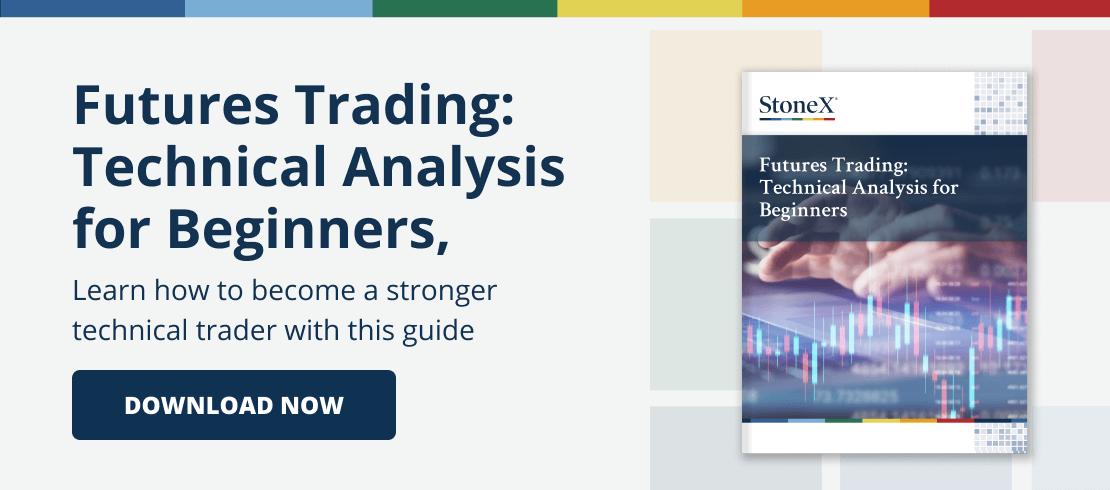Momentum
Momentum is currently one of the most used technical studies. It is an oscillator-type study used to interpret overbought/oversold markets. It assists in determining the pace at which price is rising or falling. This indicates whether a current trend is gaining or losing momentum, whether or not it is overbought or oversold, and whether the trend is slowing down.
Momentum can be calculated by dividing today’s price (identified by Field) by the closing price ‘n’ bars ago and then multiplying the quotient by 100.
Properties
Number of Bars: The number of bars back on which to base the calculation. If the chart displays daily data, then number of bars denotes days; in weekly charts, the number of bars will stand for weeks, and so on. The application uses a default of 10.
Aspect: The Symbol field on which the study will be calculated. Field is set to “Default”, which, when viewing a chart for a specific symbol, is the same as “Close”.
Interpretation
Momentum is calculated by computing the continuous difference between prices at fixed intervals. That difference is either a positive or negative value, which is plotted around a zero line. When momentum is above the zero line and rising, prices are increasing at an increasing rate. If momentum is above the zero line but is declining, prices are still increasing but at a decreasing rate.
The opposite is true when momentum falls below the zero line. If momentum is falling and is below the zero line, prices are decreasing at an increasing rate. With momentum below the zero line and rising, prices are still declining but at a decreasing rate.
The normal trading rule is simple. Buy when the momentum line crosses from below the zero line to above. Sell when the momentum line crosses from above the zero line to below. Another possibility is to establish bands at each extreme of the momentum line. Initiate or change positions when the study enters either of those zones. You could modify that rule to enter a position only when the study reaches the overbought or oversold zone and then exits that zone.
You specify the length of the momentum study. You must determine a value suitable to your trading needs and methods. Some technicians argue the length of the momentum study should equal the normal price cycle. The best method is to experiment with different lengths until you find the length that works best for that particular commodity you are trading.
Literature
Lebeau, Charles, and Lucas, David. Technical Trader’s Guide to Computer Analysis of the Futures Market. Homewood, IL: Business One Irwin. 1991.
Murphy, John J. The Visual Investor. New York, NY: John Wiley & Sons, Inc. 1996.
Colby, Robert F., Myers, Thomas A. The Encyclopedia of Technical Market Indicators. Dow Jones – Irwin. Homewood, IL. 1988.
Kaufman, Perry J. The New Commodity Trading System and Methods. 1987.
Pring, Martin J. On Market Momentum. 1993.
Pring, Martin J. Technical Analysis Explained.
Babcock, Bruce. The Dow Jones – Irwing Guide to Trading Systems. 1989.
Murphy, John J. Technical Analysis of the Futures Markets. New York Institute of Finance. Englewood Cliffs, NJ. 1986.
Wilder, J. Welles. New Concepts in Technical Trading Systems. Greensboro, NC: Trend Research, 1978.
View Other Technical Analysis Studies
- Bollinger Bands
- Commodity Channel Index
- Crack Spread
- Crush Spread
- Default
- Directional Movement Index
- Envelope
- Exponential Moving Average
- Exponential Oscillator
- High Low Moving Average
- Highest High / Lowest Low
- Historic Volatility
- Keltner Channel
- Least Squares Linear Regression
- Line Oscillator
- Momentum
- Moving Average
- Moving Average Convergence Divergence
- Moving Standard Deviation
- Open Interest
- Oscillator
- Parabolic Stop and Reversal
- Rate of Change
- Relative Strength Index
- Smoothed Moving Average
- Smoothed Oscillator
- Stochastic
- Variable Moving Average
- Volume
- Volume and Open Interest
- Weighted Close
- What is the Slow Stochastic Oscillator?
- Williams’ %R

